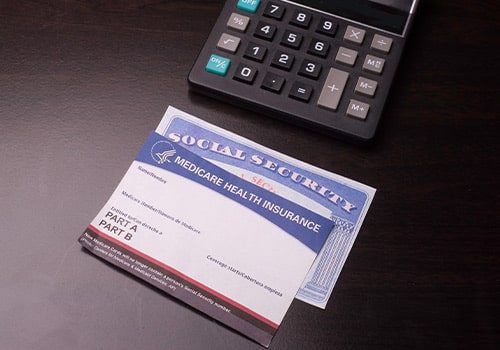Have you ever looked at your paycheck stub and seen all the deductions and withholdings on it? Perhaps you saw a line item for the FICA tax being withheld from your check.
Maybe you are not even sure what that is or why it was taken out of your pay. We are here to help explain the FICA tax, how much it will cost you, and what it is used for.
By the end of this article, you will have a much better understanding of this tax and why it benefits you and your future. Keep reading to dive in!
What does FICA stand for?
Most government programs have very long names, so they are typically given acronyms. The abbreviation FICA stands for the Federal Insurance Contribution Act, which was signed into law in 1935 and established a means by which the Federal government could collect taxes to fund the Social Security and Medicare programs.
FICA was enacted as the tax provision of the Social Security Act, which established the Social Security program itself.
What Is FICA Tax?
Maybe you have stared at your pay stub in the past, wondering, “What is FICA, and why are they taking money from me?”
FICA tax, or the Federal Insurance Contributions Act, is a tax collected by the Federal government to fund the Social Security and Medicare programs.
You might also hear this tax referred to as the Medicare and OASDI tax, often called the Social Security tax.
Technically, both Medicare and Social Security fall under the FICA category.
The tax was intended to provide retirement and health insurance benefits to retirees no longer in the workforce.
The idea behind this tax was that working Americans needed access to retirement benefits and health insurance after leaving the workforce. By paying into the system for years throughout their working lifetime, they could reap the benefits of these savings upon retirement.
Social Security benefits millions of Americans, and the FICA tax is the primary funding source for the program.
Other Social Security Benefits
Paying into the program through this tax also provides several other benefits. Not only can you get retirement benefits and hospital insurance, but
- If you have paid into the system long enough, then you will be eligible to receive Social Security Disability benefits in case you become disabled and are unable to work.
- You are also entitled to life insurance benefits, which your minor children or spouse can receive if you die before receiving your Social Security benefits. These are known as survivor benefits.
These taxes are used to fund critical government programs, so paying the tax is mandatory.
- Your employer will automatically withhold it from your check and remit it to the government.
- If you are self-employed, you are not exempt from paying the tax. The payment is due quarterly or when you file your taxes, and you will be required to pay both the employee and employer portion of the tax bill.
Social Security Administration Fees & Funding
Nearly every penny of the taxes collected is used by the Social Security Administration to fund benefit payments. Less than one penny from every dollar collected goes toward funding overhead and administrative costs. This money goes directly toward paying benefit recipients, and the program is fully funded for the next few years.
- In about 15 years, Social Security will only have enough money to fund about 86% of its obligations. So, benefits or the tax may have to change at that time.
After taxes are collected, the funds are placed into the Social Security Trust Funds. These funds are maintained by trustees and used to make payments to all recipients of Social Security and Medicare benefits.
In addition to the taxes, these programs also rely on interest earned from these trust funds, monthly premium payments from some Medicare beneficiaries, and occasional government subsidies.
KEY TAKEAWAYS
- The FICA tax is a combination of the OASDI (Social Security) and Medicare tax, and they refer to taxes collected to fund Social Security and Medicare programs (medicare, retirement, survivor, and disability insurance benefits).
- You are required to pay Medicare tax on all your income. However, the OASDI tax is only owed on a portion of your income.
- A self-employed individual must pay the employee and employer portion of the FICA tax.
2024 FICA Tax Rates

These tax rates have continued to increase since their inception. The original Social Security tax was less than 3% for the first couple of decades; however, it is much more than that today.
Both Social Security and Medicare taxes have more than doubled since their creation. Thankfully, they have remained unchanged for the past couple of decades. That might have to change in the near future, though, as the Social Security program is quickly running out of money.
The tax withholding rates for FICA in 2024 are unchanged from 2023. You will pay 7.65% of your wage in FICA tax. This is broken down into two taxes.
- OASDI tax (Social Security tax) is 6.2% of your wages.
- Medicare tax is 1.45% of your wage.
You must pay these amounts, and your employer must also pay the exact salary percentages.
So, overall, the FICA tax rate in 2024 is 15.3% of your gross salary. As previously stated, these taxes are automatically withheld from employee’s wages.
- If you are self-employed, unfortunately, you do not get an exemption. You will still pay these taxes quarterly or when filing your Federal income tax return. You will be responsible for the employee and employer portion of the tax, so you’ll pay the total 15.3%.
The IRS does give you a little bit of a break if you are self-employed. You can deduct the employer portion of the self-employment tax from your business income on your tax return.
This will reduce the amount of tax that you owe, whether you itemize deductions or take the standard deduction. Either way, it will help with your tax bill!
Must read articles related to Taxes
- The ins and outs of OASDI tax.
- Learn if you can opt out of Social Security.
- Are there limits on Social Security Tax?
- How does the Social Security Trust Fund work?
- What does married filing separately mean, and should you do it?
How To Calculate Your FICA Tax

The calculation of the FICA tax is quite simple. It is calculated like most all other payroll taxes. Simply multiply your gross pay for the pay period by the tax rate.
In most situations, that is all you need to do. However, if your income is higher than the Social Security wage base, then your calculation will be a little different.
Social Security Administration, through Congress, has established a maximum wage for collecting Social Security (OASDI) taxes. For 2024, this amount is $168,600.
- You will NOT be required to pay OASDI taxes on any income above $168,000 in the calendar year.
- The Medicare tax does not have the same income limit. You will pay the 1.45% Medicare tax rate on all your annual income (if you are self-employed, you’ll pay the entire 2.9% tax on all your earnings).
With the passage of the Affordable Care Act, the government can also collect an additional Medicare tax on wages earned above a certain threshold.
- The rate on this additional tax is 0.9%, which helps fund the program and pay for benefits associated with the rising cost of health care.
Medicare is funded primarily from Medicare taxes but also a few other sources. This is one reason the Medicare tax rate is lower than the Social Security tax rate.
- Many Medicare recipients must pay a monthly premium, which helps fund the system as well.
So, Medicare does not only rely on the taxes collected for their sole funding.
Social Security Retirement Benefit Calculation
Calculating the amount of FICA tax you owe is much simpler than figuring out how much Social Security will pay you when it is time to apply for your benefits.
- The formula for that calculation is much more complicated. It relies on using 30 years’ worth of income history to arrive at your Average Indexed Monthly Earnings.
- You will then need to calculate your bend points and make any adjustments to your PIA.
The easiest way to estimate your benefits is to create a My Social Security account and use their online Benefit Estimator tool.
FICA Tax with Multiple Jobs
As mentioned above, you must only pay Social Security taxes on your first $168,600 of income. One situation to observe is when you work two jobs and have a combined income over this number.
Each employer will withhold the 6.2% Social Security tax even after you have surpassed the limit, as long as neither salary has exceeded the limit individually.
When tax season arrives, you must ensure you get a refund of the overpaid amount. Your federal tax return has a place where you can show the amount of your overpayment and have it returned to you.
How Does FICA Work For Those Who Are Self-Employed?

We have already touched on this topic in the other sections, but here, we will discuss how FICA works for self-employed people.
For those who work for others, your employer automatically withholds this tax from your paycheck and remits it to the government.
So, what happens when you are both the employee and employer?
- You get to pay both portions of the tax, the employee’s and employer’s share.
Many small business owners don’t realize they owe FICA tax and find themselves paying lots of taxes when filing their federal tax returns.
- The IRS encourages self-employed individuals to pay quarterly estimated taxes to prevent a significant tax bill at the end of the year.
The IRS does provide some tax relief for self-employed individuals. They are allowed to deduct the employer portion of the FICA tax on their tax return.
TIP
In certain instances, a self-employed small business own may be able to reduce their tax liability my organizing their business as an S-Corp instead of a sole proprietorship, partnership or single member LLC.
Why Do I Have to Pay FICA?
FICA funds Social Security and Medicare, which are essential Federal programs. Your taxes are by far the largest source of funding for these programs, and they would not be able to operate without them.
These programs provide benefits to millions of retirement-age Americans and people with disabilities who can no longer work.
One day, you will likely find yourself ready to claim Social Security benefits of some type, and you will be glad that you have paid into the system and are eligible to receive them when the time comes.
The way Social Security works is by having enough people pay into the system to fund those receiving benefits. If you do not pay into the system, you are not allowed to reap the system’s rewards.
Your future Social Security benefits are affected by the FICA taxes you pay today. When it comes time to apply for retirement benefits, your benefit amount will be calculated by looking at your 30 highest years of earnings.
So, the higher your salary while working, the more you will pay into the system. This means that the benefits you receive at retirement will also be higher.
The Bottom Line
Nobody enjoys paying taxes, but the FICA tax is significant for many reasons. Now, you should have a better understanding of what this tax is used for and how much you will have to pay.
In most cases, you never have to worry about it because your employer automatically withholds the tax and remits it for you. If you are self-employed, it is a bigger hassle because you must remit the tax and pay both the employee and employer parts of the tax.
Hopefully, you will be a little more comfortable now when you see the FICA withholding from your pay.
Frequently Asked Questions
No, these two programs are not the same. FICA is the law that allows tax to be collected to fund Social Security.
The Social Security tax (OASDI) is included in the FICA taxes. In addition, Medicare taxes are also part of FICA. While you will often hear these things referred to within the same sentence, you should understand the difference between the two.
Social Security is a program that provides retirement and disability benefits to eligible participants. FICA is the act that enables the collection of taxes to fund the Social Security program.
Yes, for the most part, everyone pays this tax. There are a few exceptions, though.
- Children under age 18 who are employed by their parents are not required to pay the tax.
- Some state and local government salaries are exempt from the tax
- Some wages of church employees are exempt.
- Salaries received by students performing services for a college, school, or university are not subject to the tax.
- If you are part of a state-funded pension or retirement plan, you are likely exempt from the 6.2% Social Security portion of the tax.
Even if you are exempt from the OASDI tax portion, you may still be required to pay the 1.45% Medicare portion of the tax.
The tax rates on self-employment income are the same as those on regular income. The difference is that self-employed individuals must pay both the employer and employee portions of the tax.
In effect, this doubles the amount of tax that these individuals must pay.
So, instead of simply paying the 7.65% that is required of all employees, they effectively must pay 15.3% on their earnings.
They are provided with a slight tax break because they can deduct the employer tax from their personal income tax filings.
The IRS did this as a way to help put these individuals in the same position as other companies and employers.
Businesses do not withhold any taxes when they pay independent contractors. Instead, these contractors are treated as self-employed individuals for tax purposes.
They will pay the self-employment tax directly to the IRS, which means that they will pay both the employer and employee portions of the tax.
Instead of paying only 6.2% for Social Security and 1.45% for Medicare, independent contractors will pay the full 15.3% that is owed to the government.
Independent contractors typically pay their taxes quarterly instead of annually.
For FICA, the withholding is basically always the same. It is simply a percentage of your gross earnings.
However, other tax withholdings are based on your personal situation and your selected allocations on your Form W-4.
The elections on your W-4, like filing status and number of dependents, can significantly impact your withholdings for Federal and state taxes.
However, these elections do not have much bearing on your FICA withholding. This withholding will be 7.65% of your gross pay each pay period.
Many people might think their tax bracket impacts their FICA withholding; however, it does not.
Your tax bracket only affects federal, state, and local tax withholdings. Your tax bracket does affect whether you are required to pay the additional Medicare tax.
If you are a single filer and make more than $200,000 or joint filers earning more than $250,000, then you will pay an extra 0.9% of your earnings toward Medicare.
You can find a Social Security Administration office near you by using our SSA office locator and searching for your closest location.





